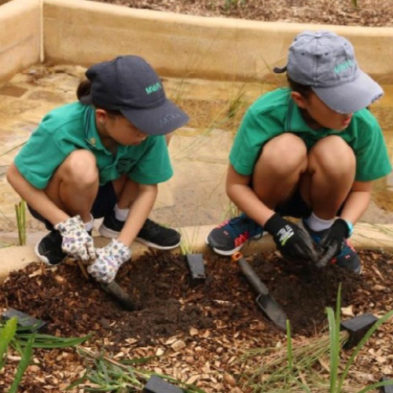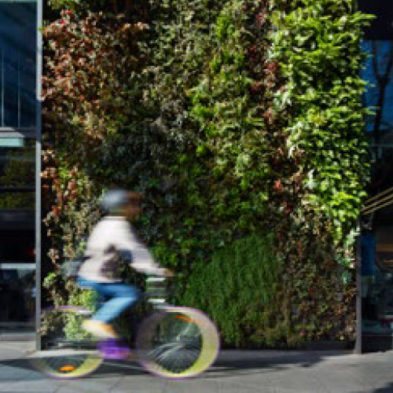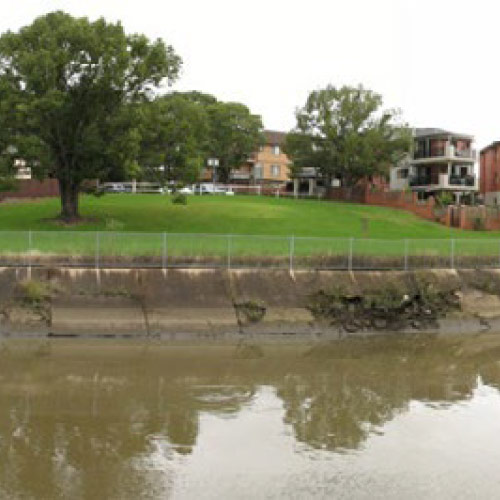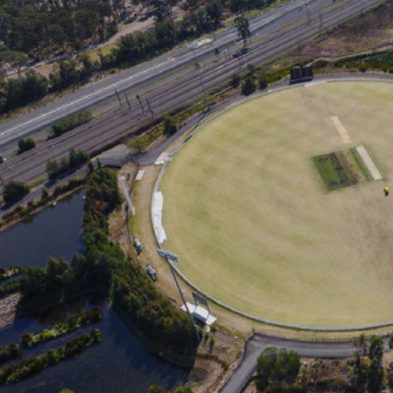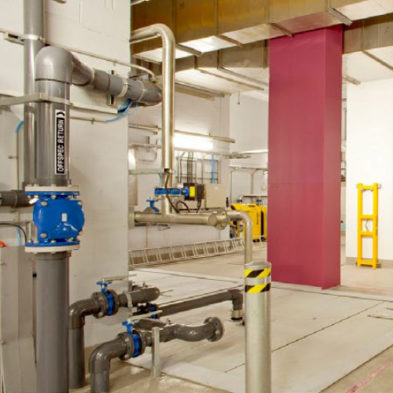Current Water Sensitive Performance
Performance against the goals of a water sensitive city
Greater Sydney was benchmarked using the Water Sensitive Cities Index in July 2017, at a workshop attended by industry representatives.
The Water Sensitive Cities Index has also been used to benchmark municipalities within Greater Sydney including Blacktown, Hornsby and Ku-ring-gai.
Greater Sydney achieved its strongest result for the goal of Achieve equity of essential services (3.9/5.0). Areas for improvement included Ensure quality urban space (2.0/5.0), Increase community capital (2.3/5.0) and Ensure good water sensitive governance (2.4/5.0).
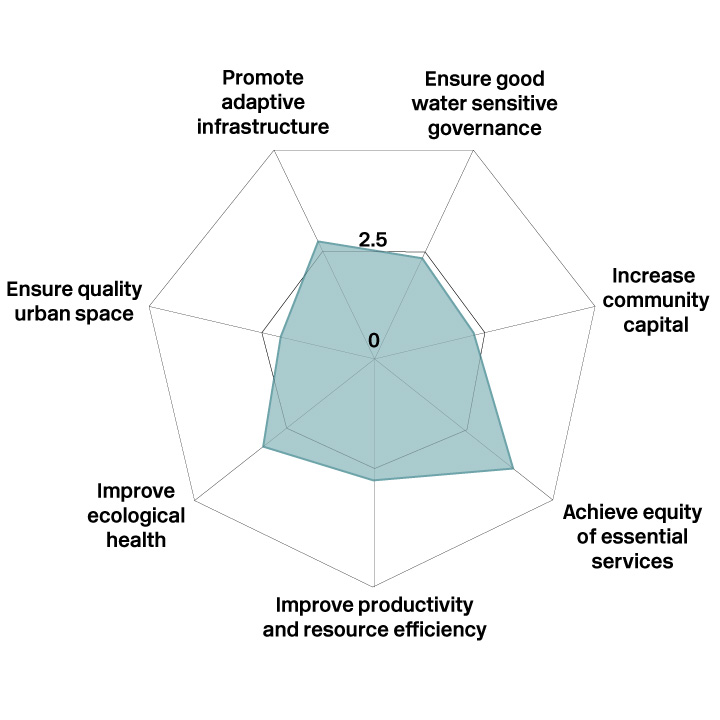

Achieving city–states
Greater Sydney’s results against the 6 city–states highlights its strong performance is in providing basic services. It has equitable water supply and sanitation services that are safe, secure and affordable (100% Water Supply City and Sewered City). Greater Sydney also performs well in providing environmental sustainability services (94% Waterways City).
The most scope for improvement relates to protecting the community against floods (67% Drained City), and using water to increase resilience (31% Water Cycle City) and liveability (8% Water Sensitive City).
The Drained City rating could be increased by undertaking comprehensive and consistent flood monitoring, modelling and risk assessments across the city.
The Water Cycle City rating could be increased by further collaboration on diverse water supplies and additional state policy and coordinated planning for a water sensitive city.
The Water Sensitive City rating could be improved by fulfilling the multiple objectives of ecosystem protection and restoration, security of supply, flood control, public health, amenity, liveability and economic sustainability.
Change strategy: how to become more water sensitive
- Vision and Transition Strategy for a Water Sensitive Greater Sydney defines a vision of a water sensitive future for Sydney and outlines the broad steps Sydney can take to enable a transition towards this future.
- Benchmarking, Envisioning and Transition Planning for a Water Sensitive Greater Sydney: Final Case Report brings together the results of interviews and workshops with industry, government and community stakeholders as well as detailed analysis undertaken by the CRCWSC’s research team.
Research relevant to Sydney
- Characterisation of chemical hazards in stormwater summarises the findings of a 2-phase investigation into the presence of chemicals in stormwater from 10 Australian catchments. The median concentration of aluminium and iron in stormwater from NSW catchments was found to be approximately double the median for the Australian-wide dataset.
- Pursuing sustainable urban water management through co-governance – a case study of Marrickville Council found that co-governance is a complex process that requires considerable effort to sustain in the long term. Marrickville Council achieved a successful co-governance arrangement due to a highly driven group of locals, an open and willing Council committed to collaboration, and the support of Council leadership.
- Transitioning to water sensitive cities: insights from six Australian cities notes that the coinciding population growth and Millennium Drought in Sydney, Melbourne and South East Queensland heightened awareness of the importance of water for enhancing liveability within the city.
- Why do residential recycled water schemes fail? A comprehensive review of risk factors and impact on objectives studied 21 residential recycled water schemes in Australia including 5 in New South Wales. The results indicated the critical risks to the long term viability of residential recycled water schemes are unanticipated operational costs, legal and contractual arrangements, regulatory requirements and approval process, and customer complaints and expectations not met.
- Valuing environmental services provided by local stormwater management assessed willingness to pay (WTP) for improvements in water security, stream health, amenity, reduction in flood risk and reduction in urban heat using data from interviews with residential homeowners in Melbourne and Sydney. WTP was found to be mainly driven by positive valuation for exemptions in water restrictions, improvements in local stream health, and decreased peak urban temperatures.
Valuing environmental services provided by local stormwater management
Operationalising resilience to drought: Multi-layered safety for flooding applied to droughts
Pesticide occurrence and spatio-temporal variability in urban run-off across Australia
Sulfide and methane production in sewer sediments: Field survey and model evaluation
Toxicity characterization of urban stormwater with bioanalytical tools
Configuring transformative governance to enhance resilient urban water systems
Transitioning to water sensitive cities: insights from six Australian cities
Microbial quality of untreated stormwater in Australian catchments: human health perspectives
Mechanisms for unpacking socio-institutional pathways for change: a research compendium from A4.1
Characterisation of chemical hazards in stormwater
CRCWSC Stormwater Quality Database
New South Wales’ Planning Framework for Water Sensitive Urban Design
- Opportunities for a Water Sensitive Greater Sydney describes the outcomes from a workshop in November 2015 to consider how to facilitate global best practice and deliver a Water Sensitive Greater Sydney. The identified opportunities are:
- Embed water sensitive principles into District Plans and planning instruments
- Improve interagency cooperation and alignment for water infrastructure planning and delivery
- Lead the reform of finance and governance arrangements for delivery of blue and green infrastructure
- Strengthen the implementation of district and local plans to facilitate improved water sensitive outcomes.
- Ideas for the Liverpool Collaboration Area include reconnecting the city centre to Georges River and Brickmakers Creek, creating a blue–green grid at the Hargrave Park social housing renewal, establishing an urban ecology hub at the Liverpool Recycled Water Plant and embedding the Georges River in the cultural and built identity of Liverpool.
- Ideas for a Water Sensitive Sydenham to Bankstown Urban Renewal Corridor adopted a collaborative approach to explore and co-design solutions around the role of water in delivering a sustainable, resilient, productive and liveable Sydenham to Bankstown Corridor. The ideas relate to circular economy, water servicing, green lines, waterway health, flooding, activating town centre and public realm, building design, communities and governance.
Opportunities for a Water Sensitive Greater Sydney
Ideas for the Liverpool Collaboration Area
Ideas for a Water Sensitive Sydenham to Bankstown Urban Renewal Corridor
Marrickville West Primary School eco water garden
Sydney water bank naturalisation
- A NSW webinar series covered Planning for a Water Sensitive City, the Water Sensitive City Index and Transition Dynamics Framework Part 1 and Part 2, Passively Irrigated Landscapes and the INFFEWS Tool.
- Valuing the benefits of local stormwater management summarises results from a discrete choice experiment for householders in Sydney and Melbourne in 2013. The average willingness to pay for Sydney households was found to be:
- $118 for exemptions from water restrictions
- $104 for a diverse waterway habitat with few nuisance species
- $47 for hot days being 2oC cooler.
- Science-policy partnerships describes pilot partnerships established with Blacktown Council and Ku-ring-gai Council. The CRCWSC acted as a knowledge broker to the Blacktown Water Working Group to support its program to strengthen the council’s water sensitive urban design policy, capability and capacity. The Ku-ring-gai Council’s science–policy partnership provided expert knowledge to help the council review and enhance key water-related policies to transition the city’s water sensitive vision.
NSW Webinar Series – Webinar 2 – Water Sensitive City Index and Transition Dynamics Framework PART 1
NSW Webinar Series – Webinar 3 – Water Sensitive City Index and Transition Dynamics Framework PART 2
NSW Webinar Series – Webinar 4 – Passively Irrigated Landscapes
NSW Webinar Series – Webinar 5 – INFFEWS Tool
Projects to mainstream water sensitive practice
Mainstreaming projects help water sensitive approaches become standard practice, supported by strong
community demand, robust science, technical capability, sufficient funding and supportive governance.
